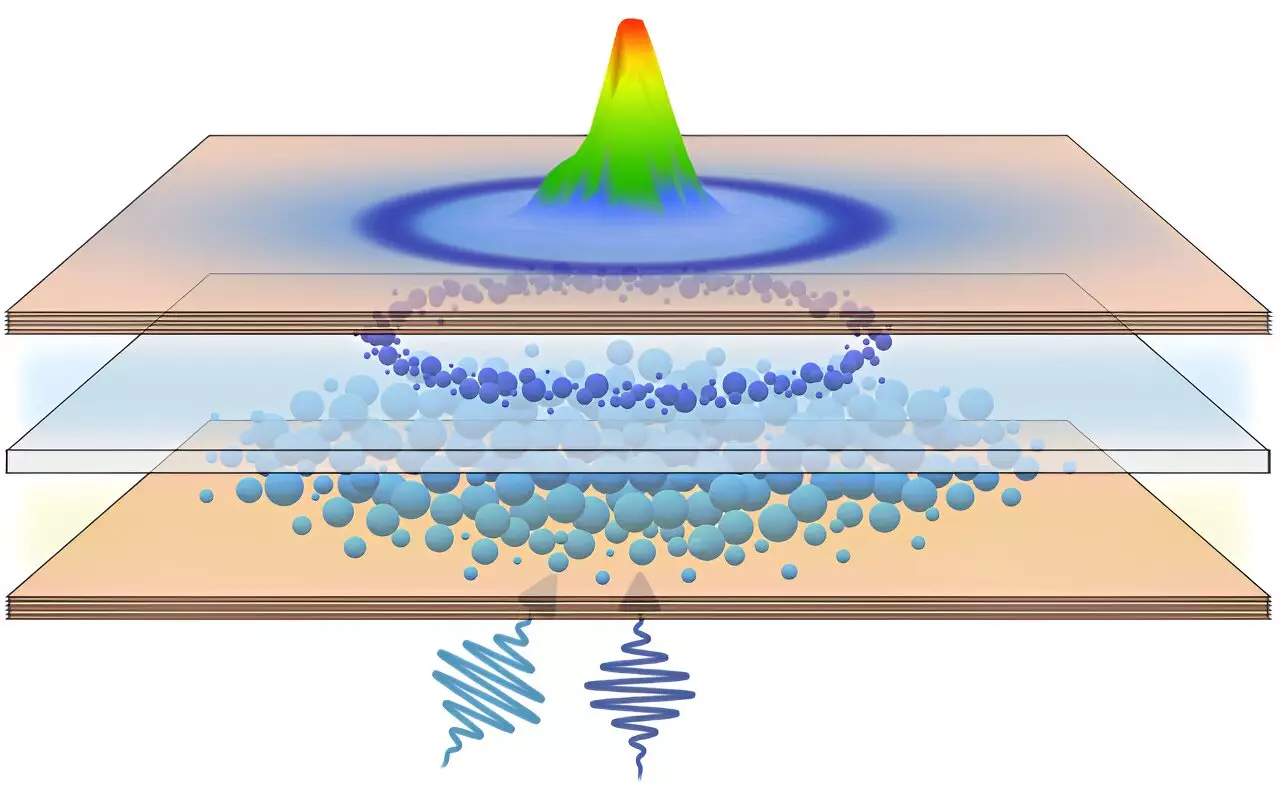

In the world of computing technologies, a groundbreaking discovery has recently been made by a team of physicists. This advancement in spatial manipulation and energy control of room-temperature quantum fluids of light, known as polariton condensates, signifies a significant milestone in the development of high-speed, all-optical polariton logic devices. This breakthrough has the potential to revolutionize the field of unconventional computing and pave the way for the next generation of technology.
Polaritons, which are hybrid particles formed by the coupling of light and matter, have long been the subject of study for researchers. These particles are often described as a quantum fluid of light that can be controlled through their matter component. However, the recent development takes this control to a whole new level. By introducing an additional layer of copolymer within the cavity, the researchers have found a way to manipulate polariton condensates without relying on commonly used excitation profiles.
The addition of a weakly coupled layer of copolymer that remains nonresonant to the cavity mode is a simple yet ingenious move that has opened up endless possibilities. Through the use of a two-color beam excitation, the researchers have partially saturated the optical absorption in this uncoupled semiconductor layer. This saturation enables ultrafast modulation of the effective refractive index and the formation of a polariton condensate simultaneously. By unlocking the secrets of locally induced polariton dissipation through excited-state absorption, the scientists have gained unprecedented control over the spatial profile, density, and energy of a polariton condensate.
The implications of this breakthrough are vast. With the ability to manipulate polariton condensates at room temperature, scientists can now design all-optical polariton logic devices. These devices can harness the advantages of ultrafast microcavity refractive index modulation as an independent tuning parameter in real-time. It also allows for the integration of weakly coupled absorbers in microcavities of a lateral design, which has been proposed as a way to bring polariton platforms into the realm of photonic chip circuitry.
“This breakthrough ushers in a new era of organic polariton platforms designed to build a strong foundation for the field of liquid light computing at ambient conditions. By taming the fascinating properties of strong light-matter interactions, we can harness the full potential of polaritons and break free from the constraints of traditional cavity architectures. We are witnessing the future of technology unfold before our very eyes,” says Anton Putintsev, a research scientist at Skoltech’s Laboratory of Hybrid Photonics and the driving mind behind this work.
This remarkable achievement signifies a quantum leap toward the future of unconventional computing technologies. The ability to manipulate polariton condensates without relying on excitation profiles opens up new possibilities for high-speed, all-optical polariton logic devices. With unparalleled control over the spatial profile, density, and energy of polariton condensates at room temperature, researchers can now explore the full potential of these hybrid particles.
The integration of weakly coupled absorbers in microcavities, along with the advantages of ultrafast microcavity refractive index modulation, allows for the design of powerful all-optical polariton logic devices. This breakthrough paves the way for the development of next-generation computing technology that is not confined to traditional cavity architectures.
As we witness the future of technology unfold, the possibilities for room-temperature quantum fluids of light appear limitless. The advancements made in spatial manipulation and energy control of polariton condensates bring us one step closer to harnessing the full potential of unconventional computing. The field of liquid light computing at ambient conditions is poised for rapid growth and innovation as scientists continue to explore the fascinating properties of polaritons.
The recent breakthrough in room-temperature quantum fluids of light has set the stage for a new era of unconventional computing. The ability to manipulate polariton condensates without relying on traditional excitation profiles opens up endless possibilities for high-speed, all-optical polariton logic devices. As we look towards the future, the integration of these advancements in technology has the potential to shape the way we compute and revolutionize the world of computing as we know it.
In the realm of software development, the ability to swiftly and accurately address bugs is…
The realm of quantum computing and communication is not just an abstract dream anymore; it…
In a remarkable leap for the field of material science, a collaborative research initiative has…
Throughout Earth's vast history, our planet has endured five major mass extinction events that reshaped…
Rainfall is a vital element of our planet’s hydrological cycle, yet many aspects of its…
On a night when the universe aligns, a mesmerizing phenomenon awaits: the appearance of the…
This website uses cookies.